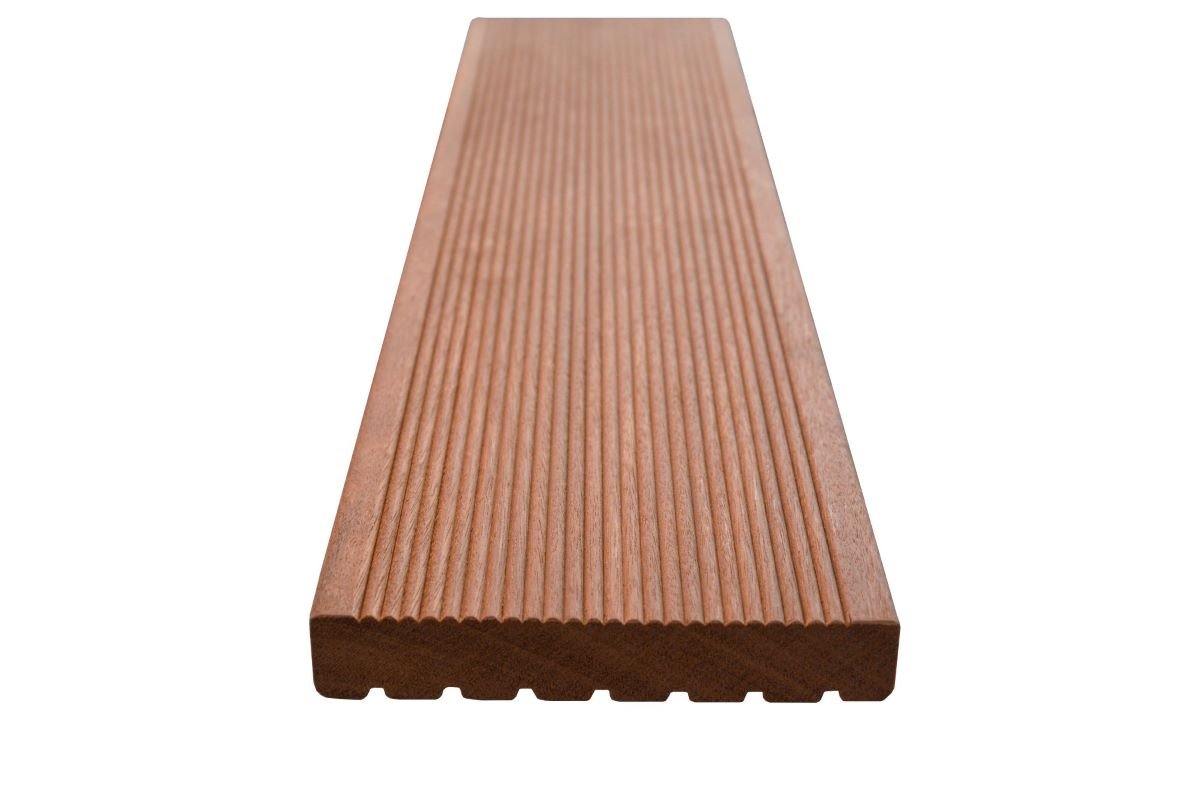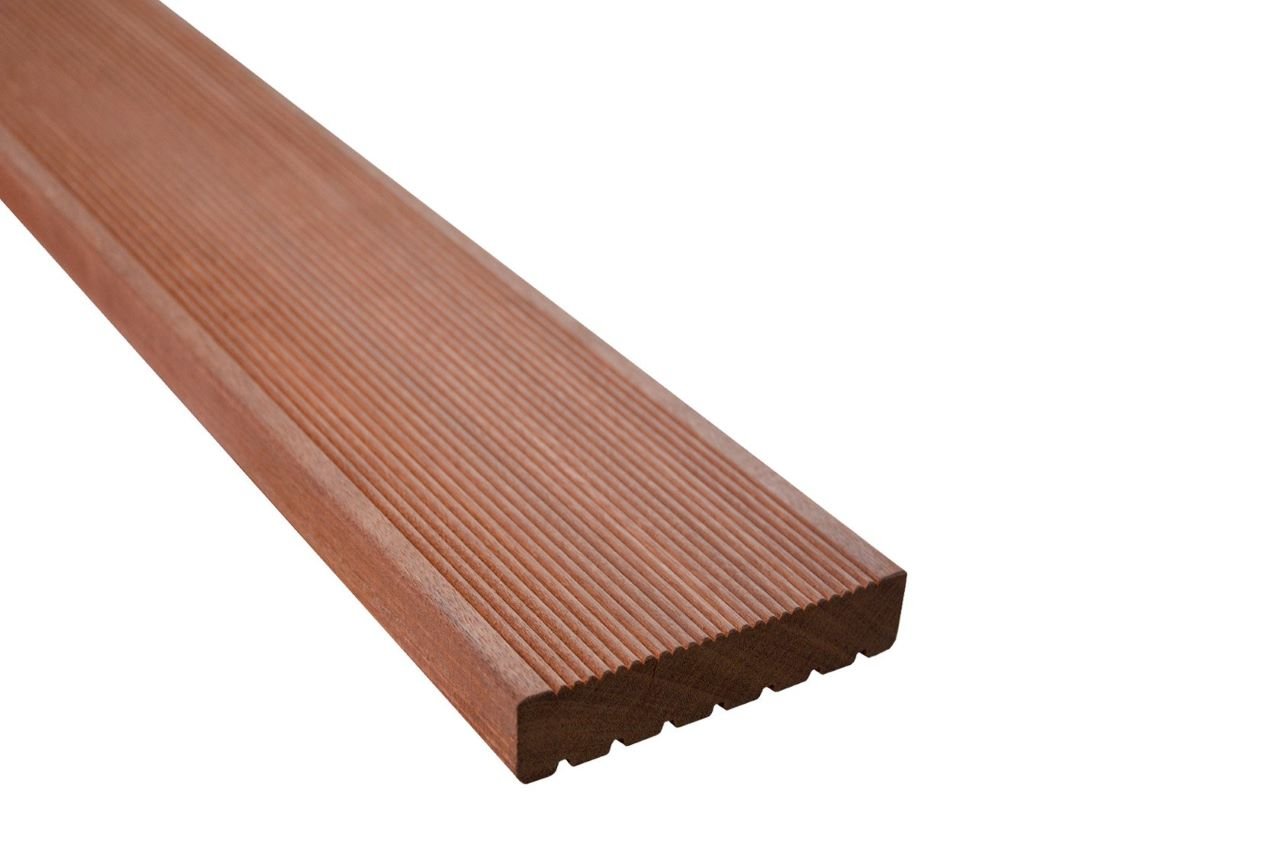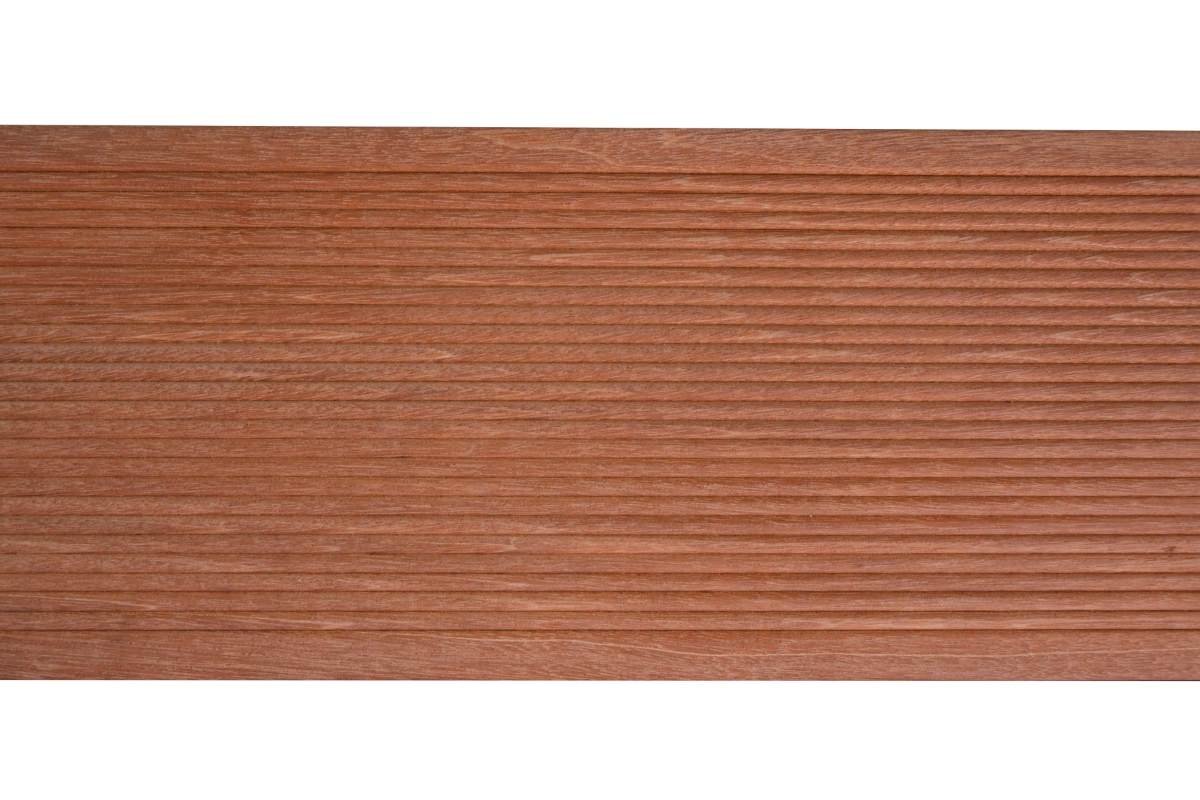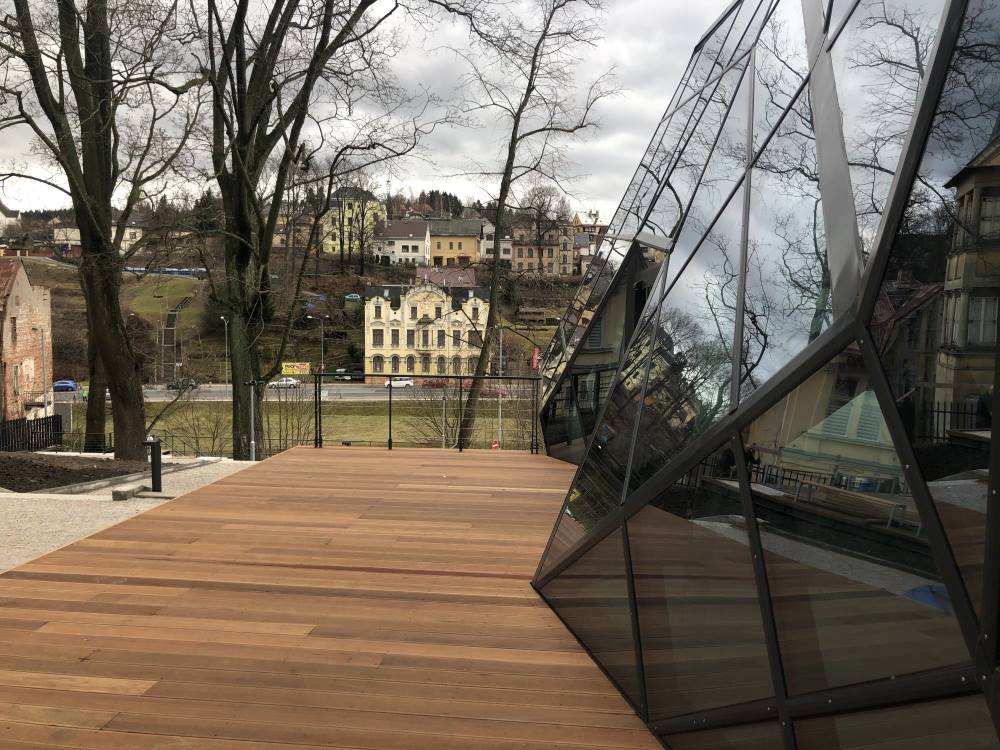| Dimensions | 25 x 145 mm |
| Profile | Reeded/Grooved |
| Grade | Standard & better |
| Origin | Indonesia |
| Wood density | approx. 850-1100 kg/m3 |
| Kiln-dried | 18 - 20% |



25 x 145 mm Reeded/Grooved
When it comes to choosing decking material for your terrace, the options are plentiful. However, if you’re looking for a blend of durability, aesthetics, and value, yellow balau decking emerges as a standout choice. This tropical hardwood, originating from Southeast Asia, is increasingly popular among homeowners and construction professionals alike. Let’s delve into the characteristics, benefits, and maintenance tips for yellow balau decking, offering you insights to make an informed decision for your next outdoor project.

Yellow balau, known scientifically as Shorea laevis, is a dense, hard timber with a natural resistance to weather, rot, and insect infestations. Its colour palette ranges from a warm yellow to a deep brown, developing a silver-grey patina over time if left untreated. This wood’s tight grain and natural oils contribute to its durability, making it an excellent choice for decking that withstands the elements.

To ensure your bangkirai yellow balau decking continues to look its best and lasts for years, follow these simple maintenance tips:
Wood is a hygroscopic material, which means that its shape changes depending on the humidity. Depending on the humidity and the ambient temperature, this process of moisture change is reversible but does not occur in the same plane. For the same relative humidity and air temperature, the wood moisture during desorption is higher than during absorption, with a range of relative humidity RH 30% - 90% by 2.5% to 3.5%. This means the wood loses volume during drying and does not return to its original dimensions when the moisture is removed. This fact fundamentally influences the behaviour of the Bangkirai terrace in the kiln-dried state.
There are changes in humidity and long-term rain, snow, and melting snow ...), and boards will increase their sizes in this period, but by 2.5 - 3.5% of their current width. It should also be noted that the terrace boards are cut in different orientations to the tangential, radial and semi-radial trunk axis, which affects the drying in dimensional percentages. Therefore, there are always different dimensions in the gaps between the boards laid with the same expansion.
In conclusion, Yellow Balau decking, sourced exclusively from AU-MEX, emerges as the premier choice for homeowners and professionals seeking durability, aesthetics, and value in their outdoor spaces. Renowned for its exceptional durability and reliability, Bangkirai Yellow Balau stands strong against wear and tear, making it ideal for high-traffic areas. Kiln-dried to ensure optimal moisture content and stability, it boasts remarkable water resistance, preventing rot, decay, and moisture damage. With versatile profiles and quality assurance, Bangkirai Yellow Balau offers a cost-effective solution for outdoor projects.
Choose Bangkirai decking from AU-MEX to enhance your outdoor living space with enduring beauty and unmatched quality, ensuring lasting enjoyment for years to come.